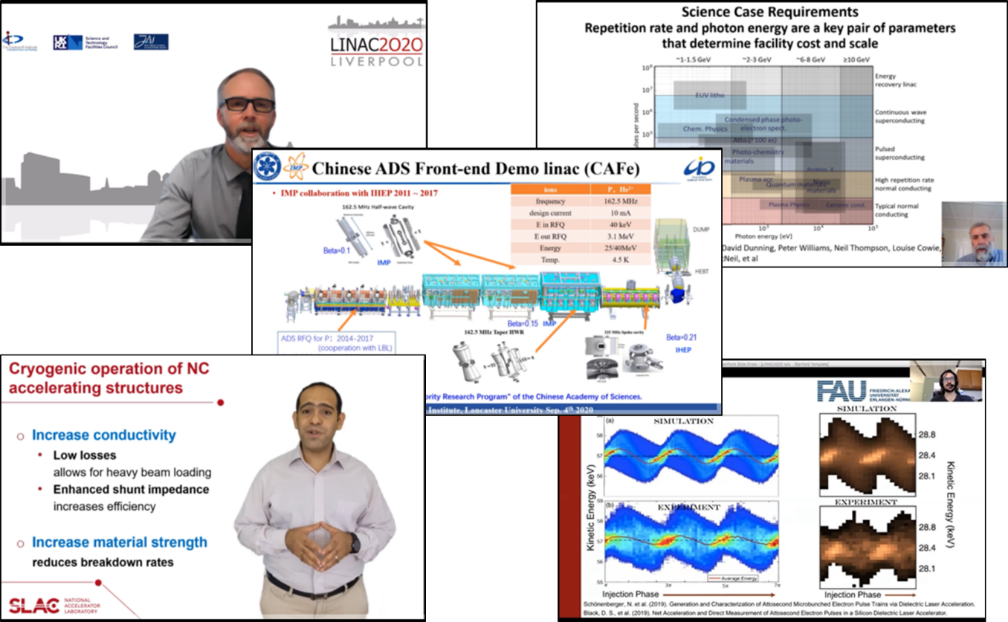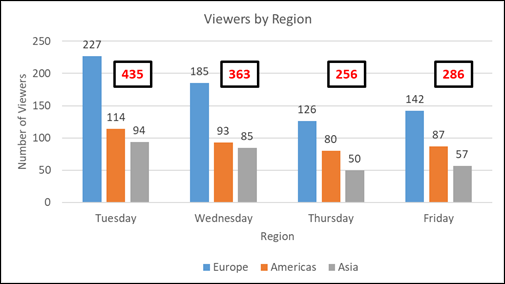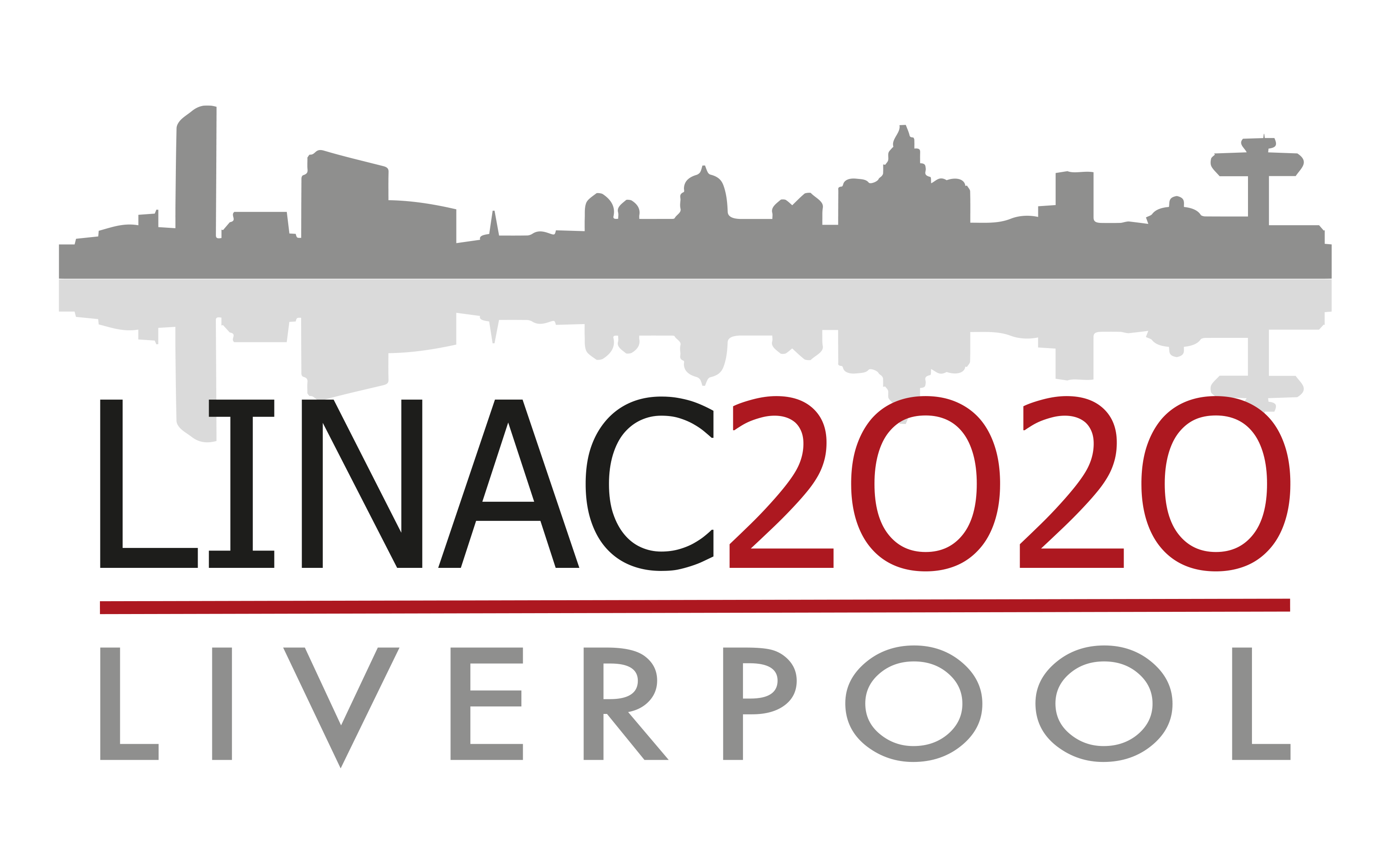In the context of the current global Covid-19 pandemic, interfacing, interactions and collaborations are most certainly being challenged in terms of groups finding ways to maintain ongoing and effective engagements. Organisers for conferences, workshops and large meetings are having to look at alternative ways for ensuring appropriate communication and dissemination of topical information, such that associated discussion and debates can be optimally facilitated without having the opportunity to interact directly in person.
The International Linear Accelerator Conference (Linac2020), which is hosted bi-annually and typically attracts more than 400 linear accelerator specialists from all around the world, was originally scheduled to take place at the Liverpool Arena and Convention Centre in the UK during the week of 31st August 2020. As global travel and interaction restrictions of the pandemic were escalating, it became clear to the UK conference hosting organisations comprising STFC Daresbury Laboratory, the Cockcroft Institute (CI) and the John Adams Institute, that alternative solutions for the delivery of the Linac2020 conference had to be sought.
The Linac International Organising Committee concluded that delaying the original event by 2-years to 2022 was the best solution. At the same time, the IOC decided that the original Linac2020 scientific programme should be appropriately captured and disseminated in a smaller, virtual conference that could present the considerable linear accelerator R&D which has been undertaken since the last Linac2018 conference in Beijing.
Prof. Graeme Burt from Lancaster University and the CI, who chaired the Linac2020 Scientific Programme Committee (SPC), said: “We agreed a suitable approach for a single, globally-focused virtual transmission. Working with the STFC Media Services team at Daresbury Laboratory, an effective Zoom-based webinar approach was adapted, all speakers kindly agreed to pre-record their talks, as well as being available for a live interaction with participants through an associated Q&A session. The decision to use this hybrid approach was critical to the success of Linac2020, to give talks free from issues whilst also having a live feel.”
Working with the invited speakers to generate the talk videos, the STFC Media Services team set-up the webinar site and coordinated the SPC convenors to be able to host the event, whilst also changing all of the existing website and SPMS communication and registration processes, which was a considerable undertaking to have everything ready within a 10-week period. Such an endeavour had never been undertaken by the STFC Daresbury Laboratory teams before.
Over the period, 1 - 4 September, the Virtual Linac2020 was hosted and interfaced with the international accelerator community as a non-physical conference, for the very first time in its almost 60-year history.
The chair of the Local Organizing Committee (LOC), Prof Carsten P Welsch from the University of Liverpool and the CI, added: ”Astonishingly, the virtual event attracted 710 live international participants from all around the world and almost 800 registered to access the offline videos. The timing of the afternoon sessions was tailored to ensure that speakers from all regions could be appropriately available for their scheduled talks at a reasonable time with respect to their location.”

Those participants who remotely connected into the virtual programme would not likely be able to connect to the entire session, owing to the regional time differences across the America’s and Asia. That being said, participant connections to the sessions were impressive, with colleagues based in 30 countries around the world reached.
As expected, regional access for the event was predominantly from European participants, who most closely matched the hosting time-zone in the UK. It was also apparent that participants from Asia would most optimally connect earlier in the sessions and connections from the America’s would consistently increase during the latter part of each session. The fact that the total participant numbers for each day were consistently high was testament to the attractiveness of the event.

A completely new element in the scientific programme was a Women In Science and Engineering session focused on retention and advancement. This was conducted live comprising a number of distinguished panellists, who reviewed the challenges that they faced in being attracted to science and engineering, maintaining motivation to stay within the field and providing insightful and thought provoking personal career experiences, as well as answering questions from the online audience.
It is not straightforward to understand the full impact, benefits and challenges of virtual events. However, it is clear that IT solutions are now available to simultaneously be able to accommodate many hundreds of participants and to disseminate impactful information in a highly effective and robust manner. Future conferences will have to look seriously at utilizing modern communication mechanisms, in addition to long-established formats.
All talks from this year’s conference will remain accessible via the Linac2020 website for registered participants. The UK partners are now looking forward to hosting the International Linear Accelerator Conference 2022 in Liverpool. More information will be made available via the event homepage in due time.

